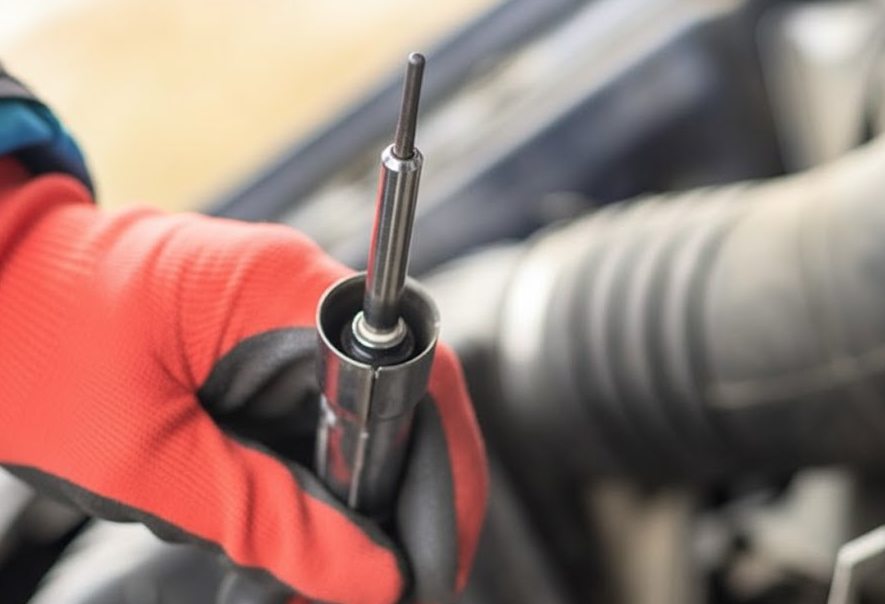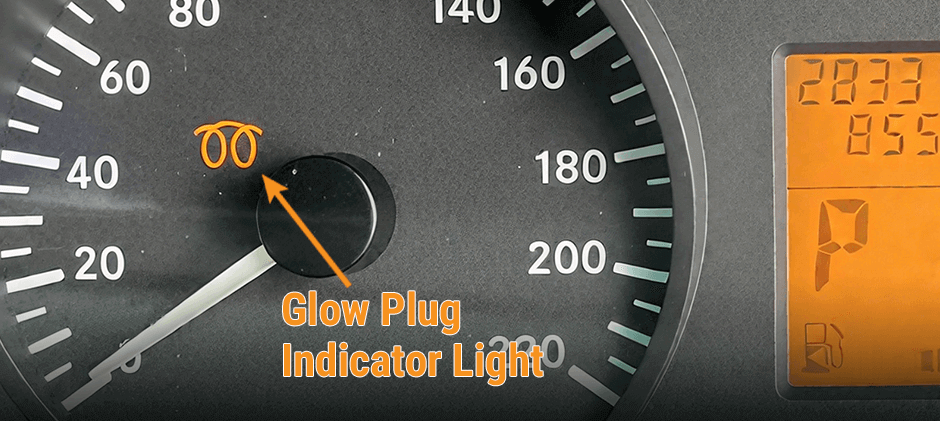If you’re driving a diesel, you know for sure that in the early winter morning, to start the engine smoothly, glow plugs play a key role. Don’t look at it as being small. It’s a terrific little heater. It can quickly heat the air in the combustion chamber to a high enough temperature for the diesel to burn and the engine to start before you twist the key. Without it, it’s almost impossible to set a car on fire on a cold morning. Of course, neither is the glow plug “invulnerable”. Over time, they also slowly wear out, age, and even strike outright. If you can detect the signs of something wrong with them earlier, you can avoid the embarrassment of the engine not starting, and you can also prevent more serious damage. Next, let’s take a look at several common diesel glow plug failure symptoms associated, and what’s hinted at behind them.

Symptoms of Diesel Glow Plug Failure
A glow plug that is about to be scrapped is more than a simple matter of having its own problems. It can cause a series of obvious troubles. From the warning lights on the dashboard to changes in engine performance, you’ll notice anomalies. Next, we look at a few of the most common and notable diesel glow plug failure symptoms.
Check Engine Light On
This is usually the first warning sign that something is wrong. Diesel engines today all have advanced control modules for real-time monitoring of the condition of engine systems. As long as it detects something unusual in some glow plug or circuit, for example, the resistance value is wrong, or the circuit is disconnected, it will immediately light up the check engine light. the warning light, and save a fault code (DTC) in the computer. Just use the fault code reader to find out if the problem is with the glow plug.
Glow Plug Light Flashing
There is a warning light on your dashboard, which represents the glow plug system, usually in the shape of a coil. When you turn the key to the “ON” gear, especially in cold weather, this glow plug light will be on for a few seconds. Don’t worry, it’s normal. The glow plug is heating the engine, helping it start smoothly. Wait until the light goes out, then just start it.
But if this light starts flashing or stays on longer than usual, make to note. There’s something wrong with the system. It’s better to check it as soon as possible. So, how to fix the glow plug warning light? Usually, the first step is to test whether the preheating plug itself is normal.

Hard Starting
This is the most typical sign of glow plug failure. If a diesel engine wants to light a fire, it must first raise the temperature to about 450 degrees Fahrenheit (that is, 232 degrees Celsius). When the engine was still cold, the glow plug was used to heat up the cylinder. If one or a few glow plugs strike, the cylinder temperature will not rise, and the result is that the ignition will take half a day, or even not at all in severe cases, especially in cold weather.

Engine Misfiring
When the temperature of a certain cylinder is not high enough, of course, the engine won’t ignite. The diesel fuel may not burn or even ignite at all. You can feel the car shaking or the power getting weaker, particularly when the engine is still cold. After the engine slowly heats up and can maintain combustion on its own, this jitter will disappear. This is already an obvious signal that the heating in the preheating stage is not done well.
Rough Idling
When the engine is first started, you feel that the idle speed is unstable and shakes harder than usual, or maybe there is a problem with the glow plug. There is one or a few cylinders that don’t have enough heat, and the ignition is not normal. At a cold start, this is most noticeable. Sometimes it’s accompanied by some abnormal engine noise.
Decreased Fuel Efficiency
Although there are many reasons for higher fuel consumption, which are not the most immediate signs of a broken glow plug, the two are often related. If the engine wants to run efficiently, it has to burn the diesel fuel thoroughly. The glow plug does not heat up enough and does not burn up enough. The engine will try to compensate with more oil. The result is often a waste of fuel and fewer miles per gallon.
White Smoke from the Exhaust
It is normal to emit white smoke on a cold start. But if there’s a lot of white smoke, or if the engine keeps coming out after starting, be aware of it. The unburned diesel mist spewed out of the exhaust pipe and formed white smoke. Usually, it’s because the combustion chamber temperature is too low. You might also smell a very heavy diesel, mixed with that choking smoke.
Black Smoke from the Exhaust
It generally means that black smoke will come out if the oil and gas mixing ratio is wrong. Either too much oil or too little air intake. Common causes are dirty injectors or blocked air cartridges. However, the cause of the failure of the glow plug is not ruled out. If the glow plug does not work well in the early stage of ignition, the combustion will not be complete, the entire combustion balance will be disrupted, and black smoke will appear in the exhaust pipe.
How to test glow plugs?
Sometimes, other malfunctions can behave almost as if the glow plug is broken. So if your car has one or several of the above situations, the typical diesel glow plug failure symptoms, the most direct way is to test the glow plug once. The good news is, you can do this yourself at home. With a digital multimeter (DMM), you can easily measure the resistance of the glow plug to see if they are normal.
Materials needed:
- A basic set of hand tools (sockets, wrenches)
- A digital multimeter (DMM)
- An infrared thermometer (optional but helpful)
- Your vehicle’s repair manual for specifications
Perform a Preliminary Inspection
Before you begin testing, take your time and perform a quick visual inspection. Check the glow plugs and wiring harness for loose or rusted connectors, frayed or damaged wires. Sometimes the problem is as simple as a loose connection. If you have an OBD-II diagnostic tool, scan for diagnostic trouble codes (DTCs). This can often directly identify the cylinder’s wiring problem.
Test the Glow Plugs with an Infrared Thermometer
This is a quick, non-contact method to find a completely dead plug.
- Make sure the engine is cold.
- Cycle the ignition key to the “on” position for about 15-20 seconds to activate the glow plugs. Do this two or three times.
- Immediately point the infrared thermometer at the base of each glow plug where it enters the cylinder head.
- A working glow plug will be significantly hotter than the surrounding metal. If you find one that is much cooler than the others, it is not working.
Note: This test will only identify plugs that are completely dead. It won’t detect a plug that is weak or has incorrect resistance.
How to Test Glow Plugs with a Multimeter
This is the most reliable way to check the glow plug condition.
- Make sure the ignition is off first, and the engine is cooling.
- Then, unplug the wire or plug from that glow plug you want to test.
- Adjust the “digital multimeter” to the smallest Ω range in the resistance range.
- The red test lead is attached to the terminal at the top of the glow plug, and the black test lead is attached to the metal part of the engine, such as a clean metal bolt.
- Normal glow plug resistance values should be low, generally between 0.1 and 2.0 ohms. The specific scope can be checked in the service manual of your car.
If the multimeter shows “OL” (out of range), that means the circuit is off. This glow plug has burned out. If the measured resistance is much higher than the others, it means it is almost dead. If one is found to be broken, it is better to replace the whole set together. In this way, each cylinder is heated more evenly, and it also avoids having to be dismantled again after several months.
Where to Get Glow Plugs for Your Vehicle?
Common reasons why glow plugs fail include excessive carbon buildup in your pre-chambers, folds and dents on the rod of the glow plug, or a snapped or damaged tip of the glow plug. When it comes time to replace glow plugs, don’t settle for inferior quality. FridayParts offers OEM-quality parts for a wide range of diesel vehicles and heavy equipment. Simply enter your vehicle details in the FridayParts search bar, and you will go through the glow plugs you need. With warehouses across the United States, we ensure you get your parts quickly. Check out our glow plugs catalog and buy new parts today!
